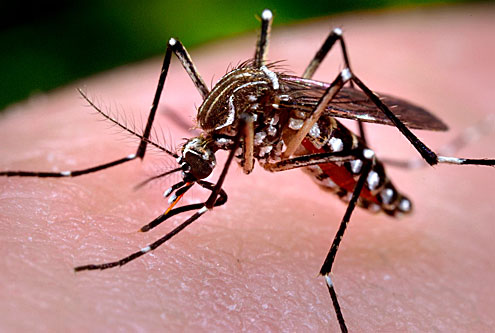
These mosquitoes are more aggressive than our native mosquitoes, are black-and-white striped, and tend to bite people during the day. They lay their eggs in very small containers of water (bottles, buckets, plant saucers) and prefer living in and around homes. They are responsible for transmitting the diseases dengue, chikungunya, and most recently Zika in various parts of the world.
Currently, all California cases of these diseases can be attributed to recent travel to other parts of the world, and are not due to local transmission. We have increased surveillance this year by deploying more traps throughout the county, but we still need the public’s help in reporting day-biting mosquitoes and maintaining dry backyards so that these mosquitoes do not make their way into Santa Cruz County.
Spring and summer is also the season for mosquitoes that can spread West Nile virus (WNV). Mosquitoes are not only a nuisance, but also a public health threat. WNV is transmitted from birds to humans by the bite of an infected mosquito. The California Department of Public Health reported 783 human WNV cases from 31 counties in 2015.
This year has brought some heavy rains intermixed with longer warm periods. This type of weather pattern has lead to slightly earlier breeding of spring and summer mosquitoes. In warmer months, it takes seven to ten days for a mosquito egg to develop into a flying blood- sucking insect. A female mosquito can lay between 50 to 200 eggs at a time, so a neglected swimming pool for example, can produce hundreds of thousands of mosquitoes and infest an entire neighborhood.
It is critical that residents empty water-holding containers in-between rains and properly seal septic systems and water-conserving containers like rain barrels.
Instructions for “mosquito-proofing” rain barrels can be found on our website at agdept.com/mvc.html.
During this time, please remember to:
- Report dead birds by calling 1-877-WNV-BIRD (877-968-2463) or online at www.westnile.ca.gov
- Dump and drain standing water sources around your property. Obtain mosquito-eating fish for free by calling the district.
- Report neglected swimming pools and other backyard sources, and day-biting mosquitoes to Mosquito and Vector Control at (831) 454-2590, agdept.com/mvc.html, or visit our office: 640 Capitola Rd. Santa Cruz